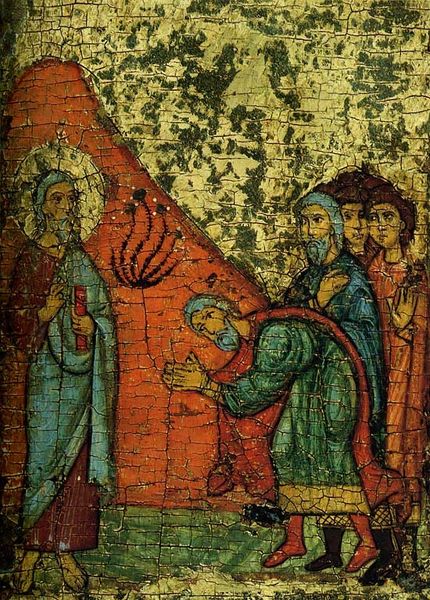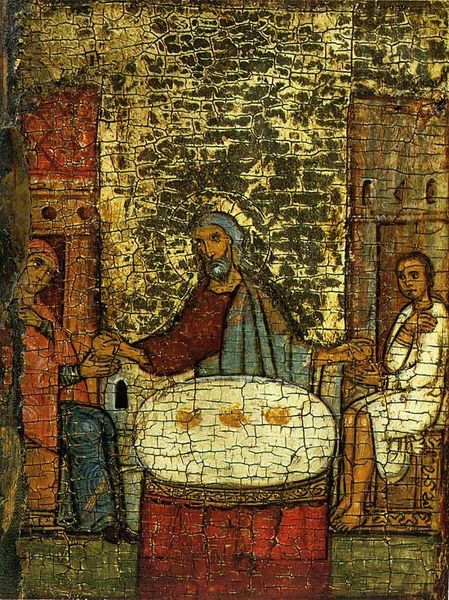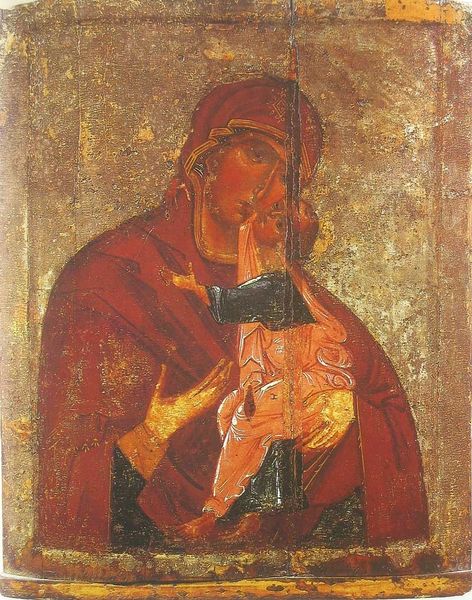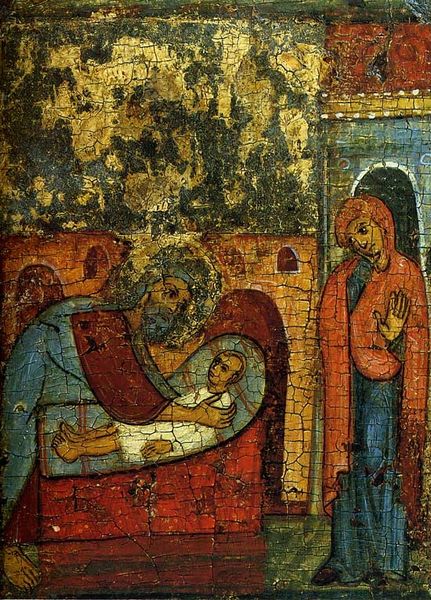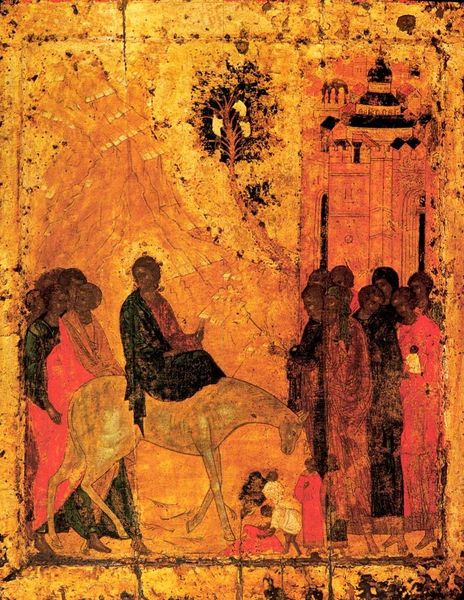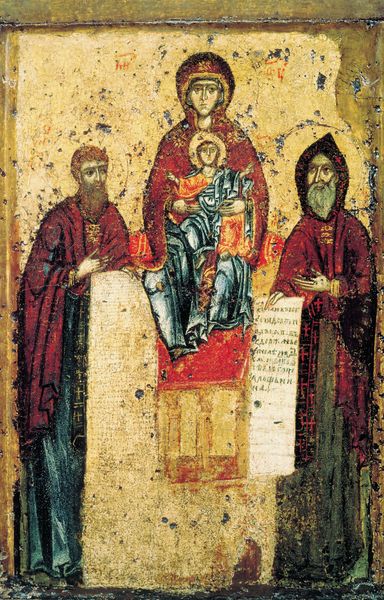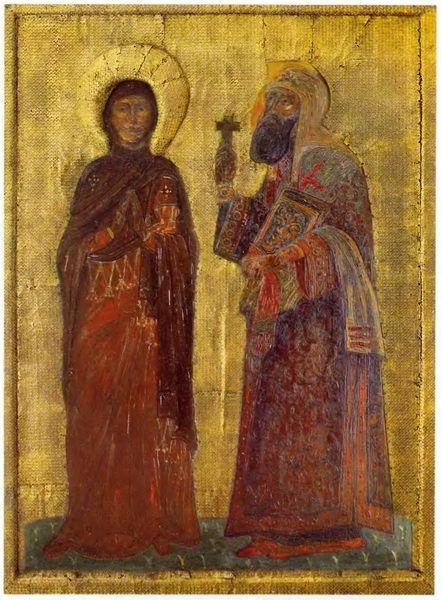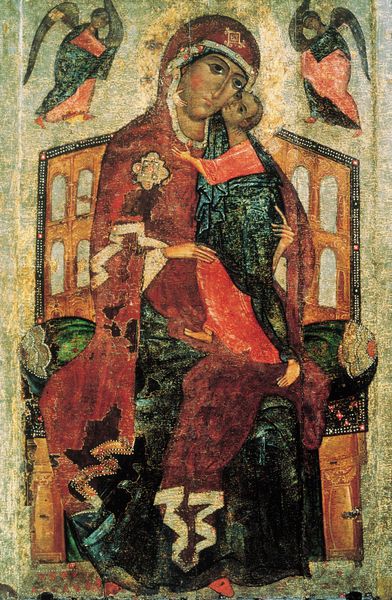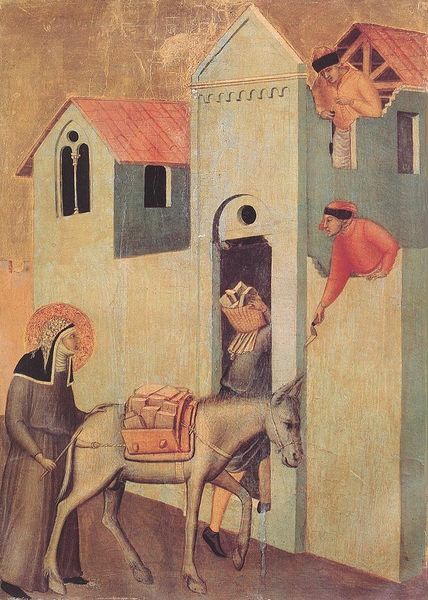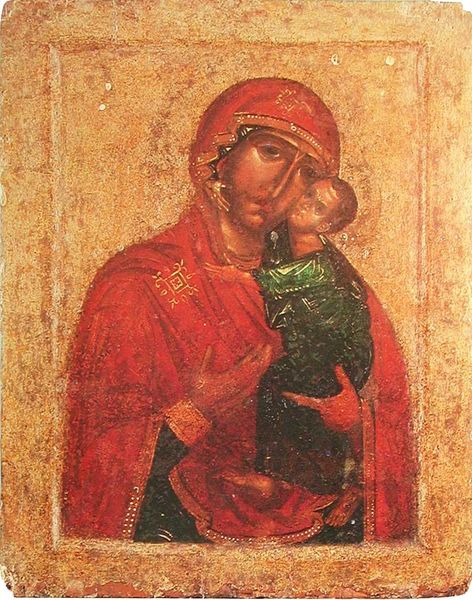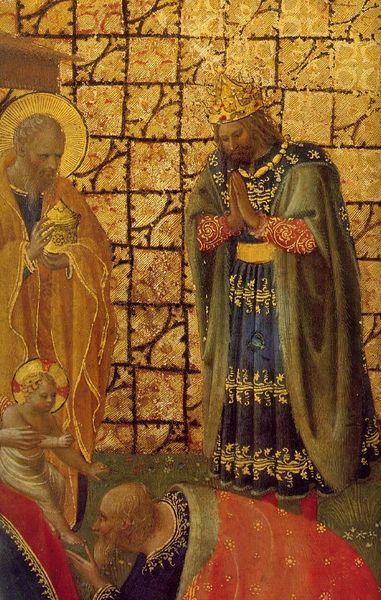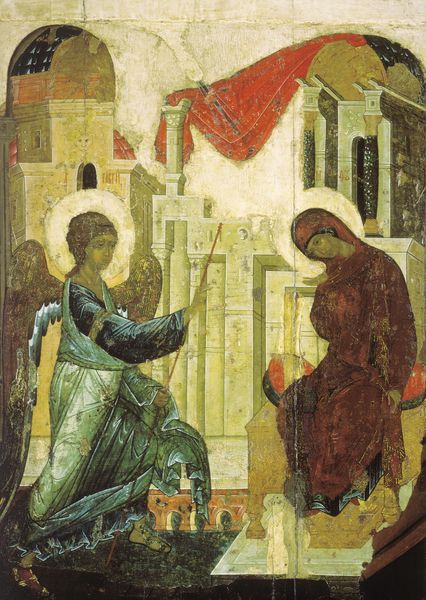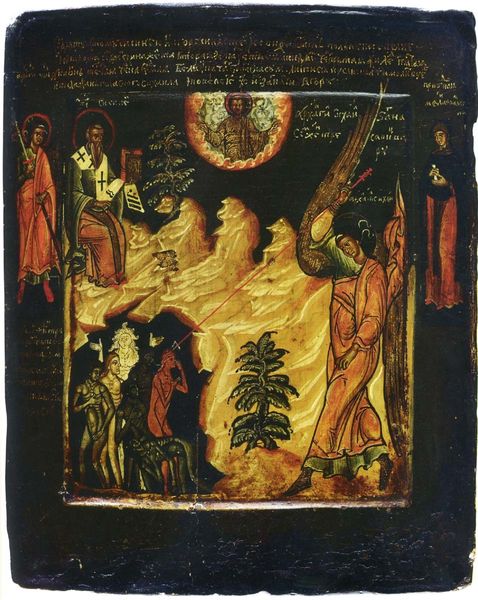
Elijah Meets the Sarepta Widow (from Hagiographic cycle of detail of 'Prophet Elijah in the desert' ) 1325
0:00
0:00
tempera, painting
#
portrait
#
byzantine-art
#
medieval
#
narrative-art
#
tempera
#
painting
#
figuration
#
oil painting
#
history-painting
Copyright: Orthodox Icons,Fair Use
Editor: This is "Elijah Meets the Sarepta Widow," a tempera painting from 1325. It's part of the hagiographic cycle, currently held at the Tretyakov Gallery in Moscow. I find the severe expressions and fractured texture surprisingly moving. How do you interpret this work within its historical context? Curator: Well, we must consider the iconographic tradition it stems from. These aren't merely aesthetic choices; they represent a deeply ingrained social and religious framework. Icons like this weren’t just art; they were considered windows into the divine, imbued with a sacred power within the Orthodox community. How do you think that shaped its function? Editor: That’s a really important point. It almost feels wrong to just consider it 'art' if it was designed for ritual and devotion. Did the placement within the church, or who commissioned the work, influence the choices made by the artist? Curator: Absolutely. The Church exerted immense influence, dictating subject matter and even stylistic elements. Commissions often came from wealthy patrons seeking to demonstrate their piety or solidify their social standing. The political motivations behind image production were ever present, subtly legitimizing power structures. Notice, for instance, how Elijah is rendered… what does his portrayal communicate? Editor: His gaze seems direct, almost challenging. Maybe he is acting as an authoritative figure to validate the power structures. So much to consider about imagery as not just aesthetics but powerful statements. Curator: Exactly! Recognizing this historical relationship between power and imagery helps us see these icons not just as objects of faith, but also as cultural artifacts reflecting the complex social dynamics of their time. They're products *and* producers of meaning. Editor: That perspective really changes how I see it. It's like understanding a historical document instead of just admiring a pretty picture. Thanks for making this much clearer for me. Curator: My pleasure. Hopefully you and our listeners have gained greater insights into how Orthodox icons function as public art.
Comments
No comments
Be the first to comment and join the conversation on the ultimate creative platform.
